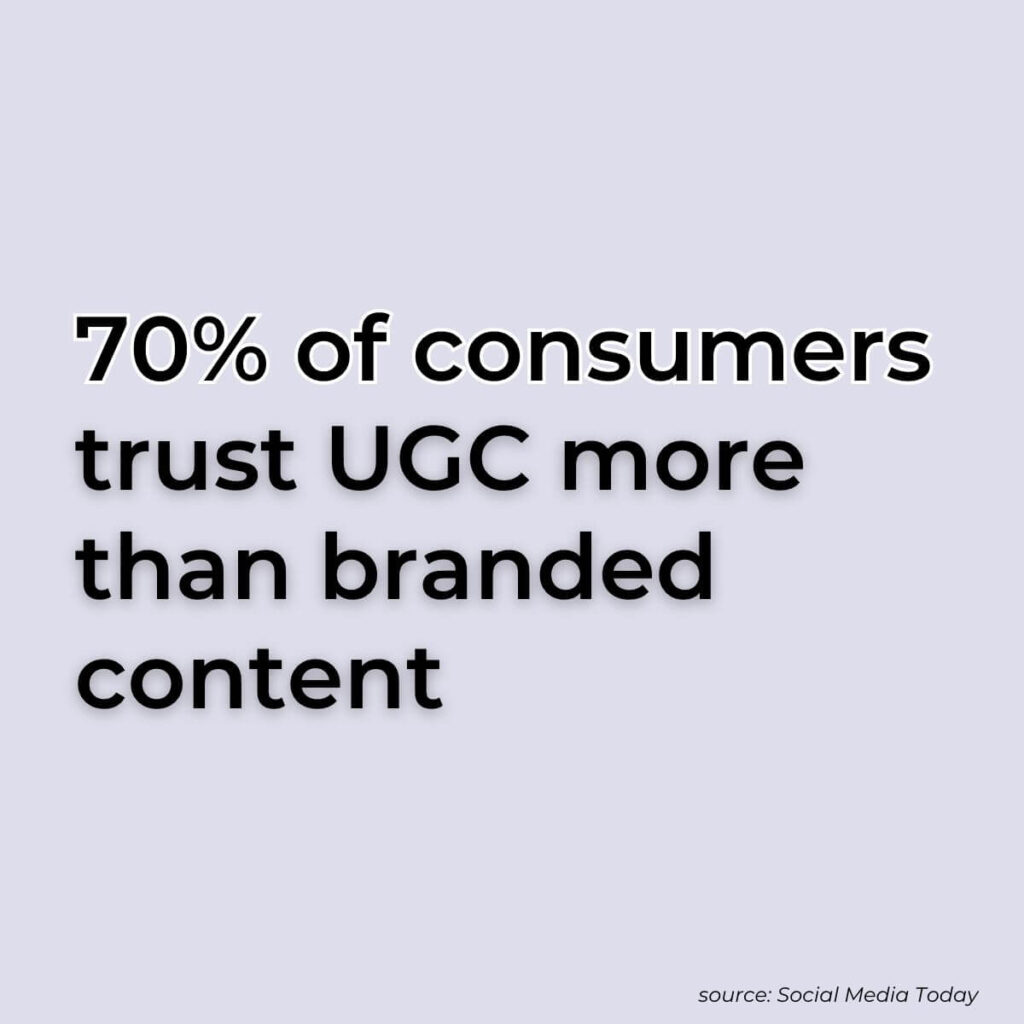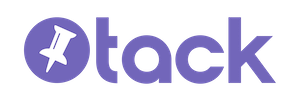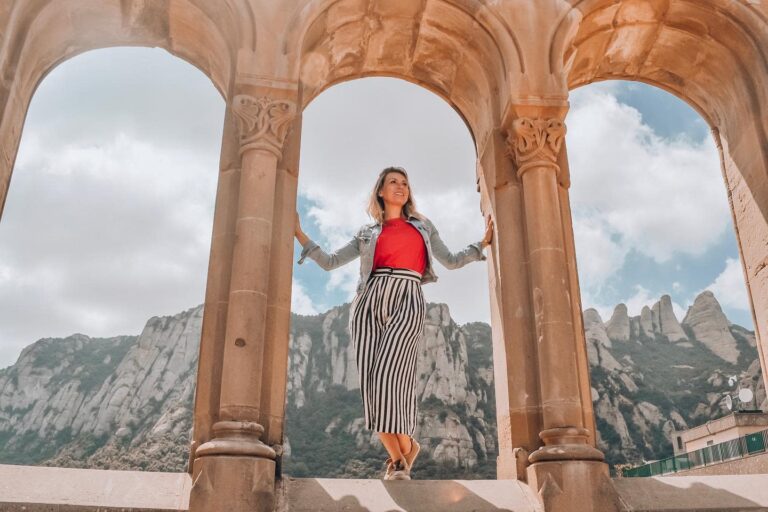Innovative UGC Campaigns to Inspire You [10 Examples]
Every social media manager and digital marketer has had this thought at least once already this year:
How can I create awesome UGC campaigns for my brand?
Obtaining epic UGC is much easier said than done, and it can be difficult to plan and execute a campaign that creates the type of content you need for your social media feeds.
Should you run a contest, hire influencers, or poll your audience? Or perhaps would a mix of a few various tactics be your best bet?
If you’re not sure where to start, why not let some of the greatest UGC campaigns from the last few years guide you and inspire your efforts?!?
In this post we’ll break down ten of our favorite UGC campaigns and discuss what they did, the results they got, and why it worked.
Before we dive into the examples, though, it’s important to cover a few basics first to set the context.
What are UGC campaigns?
A UGC campaign is a marketing strategy designed to get a brand’s customers, fans, or followers to publish digital content that supports the brand’s marketing objectives. Brands often offer incentives for people to submit UGC through social media channels.
Beyond branding and engagement, UGC campaigns offer another benefit: authentic content brands can use in their marketing and advertising.
With the rise of advertising on social media platforms starting around 2010, brands started seeing that ads featuring UGC were oftentimes more effective than ads featuring highly polished photos and videos shot in a studio. Thus, UGC campaigns allow brands to double dip—they get the branding benefits of running the actual UGC campaign, and they get marketing collateral created for them.
What makes a UGC campaign successful?
The success of a UGC campaign is determined by the objective. For example, which outcome is your first priority?
- Create fans and boost engagement
- Accumulate high-quality user-generated content
If you’re looking for the first, then you’ll likely set up your campaign in a way that gets as many people as possible to participate.
If you’re looking to accumulate UGC for later use in your ad campaigns, you might want to target users who will submit higher quality content.
Bottom line: In order to run a successful UGC campaign, you’ll likely need to set a goal for either quantity or quality.
Types of UGC campaigns
The type of campaign you run has a big impact on the UGC you receive. Consider these four basic types of UGC campaigns: Contests, Evergreen, Influencers / Creators, and Earned.
Contest
Contests are one of the best ways to activate your community, and if you plan them correctly they’re a fantastic way to generate UGC. Contests can be grand (like a national campaign supported by advertising and a microsite) or modest (like a photo contest run organically on your Instagram page).
Click here to read more details on how to use contests to generate UGC.
Evergreen vs. time sensitive
Will your UGC campaign happen in a predetermined amount of time, or will it be ongoing? Time-sensitive campaigns are more common and easier to execute.
Evergreen UGC campaigns can be beneficial when combined with larger marketing campaigns. An example of this might be a hotel using print collateral in the lobby to promote a branded hashtag a guest can use for their Instagram feed, Facebook page, or YouTube channel.
Creator sponsored (influencer content)
Another popular type of UGC campaign is hiring creators to produce content for your brand. This method will likely lead to the highest quality UGC, but the execution can be time-consuming and expensive. Ensure that you have specific goals for the amount of content created or the desired marketing metrics (impressions, clicks, engagement, etc.) defined before you start this type of campaign.
Earned
While it may not be viewed as a typical “campaign,” the act of collecting UGC your brand has already earned organically is a great way to source content. Using Instagram hashtags and location searches (or a specialized UGC rights management tool like Tack) you can find and obtain permission to use UGC featuring your brand without having to create a contest or hire influencers.
OK, now let’s get to the examples!
Breaking down 10 UGC Campaign Examples
We’ve combed through dozens of successful (and unsuccessful) UGC campaigns and trimmed them down to our favorite ten examples. Let’s take a look at the details of these campaigns and what made them so successful.
#1: Dove – Project #ShowUs
The Dove brand has a long history of challenging stereotypical beauty standards, so creating a UGC campaign featuring images of real women & non-binary individuals with none of the typical airbrushing and photo enhancements was totally on-brand. With Project #ShowUs, Dove partnered with an agency to generate more than 10,000 images that were curated into a Getty Images library.
Not only did this UGC campaign generate a ton of media buzz and public relations, it also brought about the opportunity for reform, as publishers and advertisers were able to use high-quality yet un-doctored photos of subjects in their work.
#2: San Diego Tourism Authority
Every city that’s trying to attract tourism needs the same thing—photos of people enjoying themselves in that city! And for the San Diego Tourism Authority, it just wasn’t feasible to send a photographer to every convention and event to capture the photos they needed to promote the various business and leisure opportunities available. Luckily, since so many people are already capturing sunsets on Instagram, the SDTA was able to use Tack to obtain permission to use this UGC and amass a massive library of more than 12,000 photos.
Just look at their incredible Instagram feed!
By using the tagging and sorting features of the Tack library, the SDTA can easily search for captions, usernames, locations, and tags to post fresh content to their social media accounts. Additionally, photos from the media library can be incorporated into the website with a tackboard widget, which eliminates the need to manually send photos to the website team for upload.

#3: Adobe Art Maker Series
One way to run a successful UGC campaign is to go broad—obtain thousands of submissions. Another way is to go deep—obtain fewer submissions that are detailed, long-form videos.
This was Adobe’s approach with its Art Maker Series: How Did They Do That?, which featured tutorial-style videos from well-known artists that showcase their entire creative process for select works of art. Not only are the videos fascinating, they do a great job showcasing how the Adobe product line is used at different stages of their creative process.
#4: GoPro
When it comes to UGC, GoPro is in a class of its own because their product is essentially designed to create content! Sure, there are plenty of professional applications for GoPro cameras, but the vast majority of their products are used by everyday consumers documenting their adventures.
And GoPro has capitalized on this community—more than 6,000 GoPro-tagged videos are uploaded to YouTube every day! Their YouTube channel is also extremely popular, with more than 10 million subscribers.
While GoPro runs plenty of contests and UGC campaigns specific to their marketing campaign efforts (especially with new products), they’ve transcended the typical UGC strategy into more of a UGC lifestyle… They even have a licensing agreement listed publicly on their website encouraging people to submit content to their brand.
GoPro is truly a masterclass in UGC.
#5: Dune London
Fashion is an industry that lends itself perfectly to UGC. Celebrities are great to raise awareness but before the actual purchase, many shoppers want to see people just like them wearing the clothes.
Dune London, a DTC English footwear and accessory brand, understood the power that user generated content has to convert its website visitors into customers. After obtaining rights to UGC they sourced from Instagram, Dune London started using that content on their actual product pages and the results were tremendous:
Sales from shoppers who interacted with UGC on their product pages increased by 82%, according to Internet Retailing.

This speaks directly to the power of user generated content for ecommerce conversion rates for fashion brands and its ability to boost sales.
#6: KAABOO
There’s no better way to advertise upcoming iterations of annual music festivals than with photos and videos from previous shows. There’s nothing quite like the social proof of being able to picture the venue, the energy, and the crowd than by seeing photos from the actual event.
Musical festivals are often run on razor-thin margins, however, and hiring professional event photographers can be expensive. Luckily for the organizers of KAABOO, a musical festival that ran for three years in Del Mar, their event was full of amateur photographers that were more than happy to post their experience to Instagram.
With locating searches and hashtags, the social media marketers working with KAABOO were easily able to find Instagram content featuring their festival using Tack. With a searchable library of over 650 photos, KAABOO Del Mar was able to effectively publish new and engaging content on social media to promote its upcoming festivals. Additionally, Tack allows users to easily reach out to Instagrammers and obtain permission to use their content. Brands get free UGC and users get their content featured on a major festival’s social media posts—it’s a win win situation.
#7: Spotify’s #FindYourFeels
While most people tend to associate UGC with visual content like photos and videos, Spotify proved there is an opportunity to use this strategy with audio as well. The ‘Find Your Feels’ campaign was born of a unique insight from Spotify’s annual advertising survey:
“47% of Gen Zs believe they have become part of a global community because of either music or podcasts.”
Doubling down on this insight, Spotify gathered together a wide range of influencers to share stories of how music and podcasts have helped guide and shape them through some of their more significant life experiences. These interviews were broadcast via Spotify’s social media channels and available on the platform, of course.
In a world saturated with visual content, this influencer campaign stands out by utilizing a lesser-used channel like audio.
#8: Hyatt – #InAHyattWorld
While this example is older, it’s also a perfect illustration of how evergreen UGC campaigns can be created from your customers by mistake! Here’s the story:
Several years ago, Hyatt came up with an idea to have their employees share photos of behind-the-scenes moments with the branded hashtag #InAHyattWorld. These posts would be amplified by their marketing team to show the little details and extra effort the staff go through to make a Hyatt hospitality experience truly special for their guests.
However, upon implementation of the campaign, savvy guests caught on and began posting their own experiences using the campaign hashtag, essentially hijacking the employee campaign while making it far more effective in process!
On Instagram, the search for #InAHyattWorld currently displays nearly 100,000 submissions from more than 500 locations all over the world. Truly a case study in how happy accidents can lead to massively successful UGC campaigns.
Lesson for marketers: Don’t underestimate the awareness and creativity of your target audience!
#9: Warby Parker Home Try-On
This next example showcases how consumer generated content can work hand-in-hand with new technology, in this case, augmented reality (AR). AR inputs digital media into a real-world setting—you’re probably most familiar with this experience through filters on various social media apps like Snapchat.
In an absolutely genius move, the eyeglass brand Warby Parker utilized next-gen AR technology to offer a free service to go along with their product: Virtual Try-On. This is a lower-friction version of their Home Try-On service, which allows potential customers to receive up to five pairs of frames, try them on at home, and send back the ones they don’t like. As you can imagine, if you take out the hassle of shipping, waiting, etc., and use an instant virtual solution, the convenience for shoppers goes through the roof.
But Warby Parker didn’t stop there. By including a clever call to action on their app, users were encouraged to share their new look on social media with the branded hashtag #warbyhometryon. This combination of technology and marketing strategy was an instant viral success, generating more than 56,000 videos from shoppers. Additionally, Warby Parker found that people who took the time to create UGC were 50% more likely to become customers (CB Insights).
#10: Glowforge
Glowforge, a 3D laser printing company, used a simple premise to start collecting UGC from its customers—When people make things, they like to share them on their social media pages. In just three years using Tack, Glowforge has collected more than 8,000 assets like this from customers using their product:
And using their tech background, the folks at Glowforge took advantage of our simple-to-use Zapier integration to pull the UGC they obtained into their own content management systems.
Getting Started With UGC Campaigns
We hoped you enjoyed seeing these examples of user generated content campaigns, but more importantly, we hope you do something with it. As you’ve seen, there are several different ways to run your own UGC campaigns:
- Hire creators and influencers to post photos and videos
- Create contests to engage your fans
- Find and obtain permission to repost UGC that already exists
The path you choose is your own, and you’re also not limited to just one option. We may be biased, but we believe the quickest and most efficient way to obtain UGC is to simply ask permission to use the content that’s already out there.
If that’s the case, Tack can help you find Instagram content featuring your brand, request permission to use it, and build your media library.





